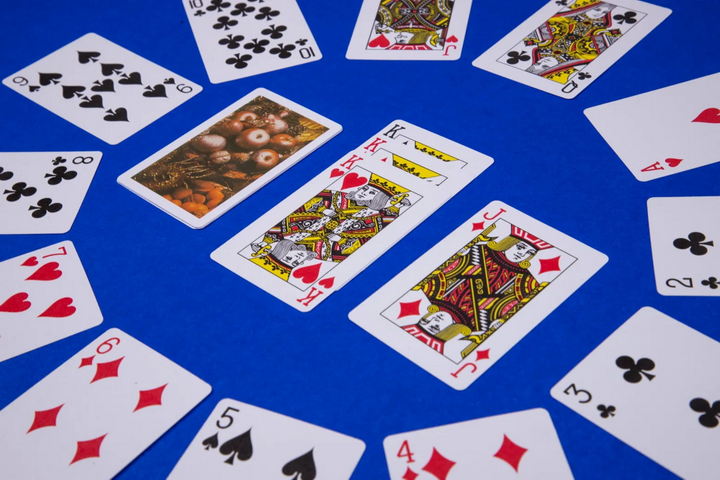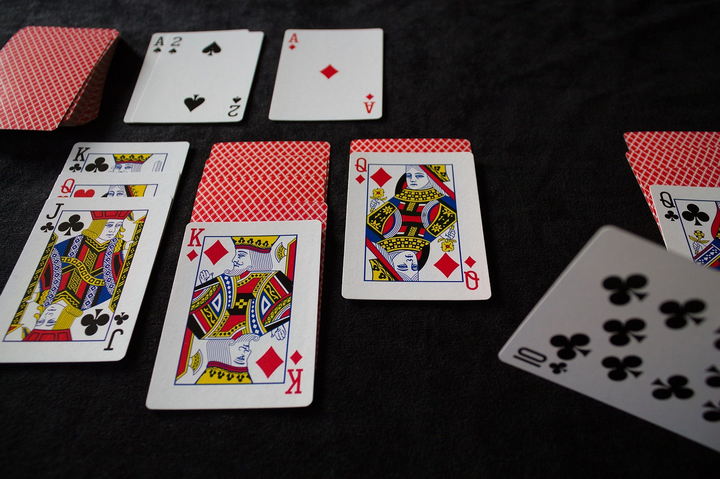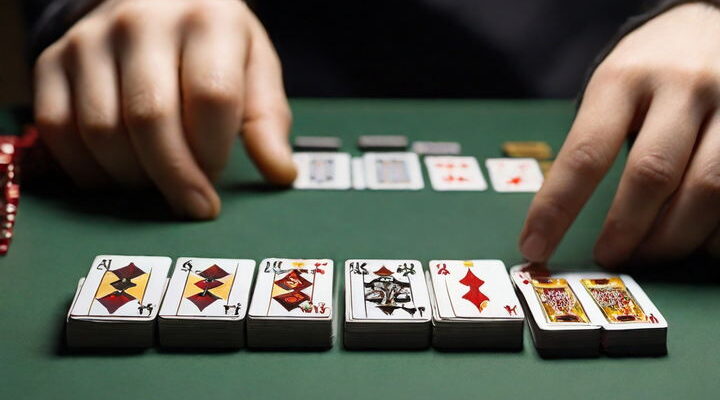Solitaire, the classic card game that many of us played on our computers before the internet took over, continues to be a beloved pastime worldwide. But beyond the basic Klondike version lies a vast and sometimes daunting world of Solitaire variations. Each offers its own unique challenges, pushing players to strategize differently. For those who love to test their patience and skill, delving into these variations is like finding a treasure chest in the gaming universe. Today, we’re going to talk about the 10 Most Challenging Solitaire Variations—a list that promises to spice up your card game routine with a mix of frustration and triumph, laughter and intense concentration.
But why bother with these challenging variations, you might ask? Well, for starters, they inject fresh excitement into a familiar game, testing your skills and strategies in new ways. They also sharpen your mind, as mastering these games requires more than just luck; it demands strategic planning, foresight, and sometimes, a bit of creativity. Plus, let’s be honest, the thrill of conquering a particularly tough game is unbeatable. It’s not just about the victory; it’s about the journey there, the decisions you make, and the lessons you learn along the way.
In a nutshell, Solitaire is more than just a game. It’s a hobby, a brain exercise, and for many, a daily ritual. By introducing these challenging variations, we’re not just offering you games; we’re inviting you to expand your Solitaire horizons, to challenge yourself in ways you hadn’t imagined, and to find joy in the complexity and variety that these games offer. So grab your deck (or, more likely, open your app), and let’s get ready to explore the fascinating world of Solitaire variations.
10 – Spider Solitaire
Spider Solitaire, a game that offers a more complex take on the traditional Solitaire experience, demands strategic thinking and patience. Unlike classic Solitaire, Spider uses two decks of cards, creating a denser tableau that players must navigate. The objective? To remove all cards from the table by stacking them in descending order, from King to Ace, in the same suit. What makes Spider truly challenging is the necessity to balance between uncovering new cards, creating ordered sequences, and freeing up spaces for these sequences. It’s a mental juggle that requires foresight and sometimes, a bit of luck.
Players can adjust game’s difficulty by playing with one, two, or four suits, making it accessible for beginners yet still challenging for seasoned veterans. The trick to mastering Spider Solitaire lies in minimizing moves and maximizing empty tableau columns. This strategy opens up more options for maneuvering cards and creating necessary sequences. While the game may seem daunting at first, with practice, players develop sharper strategies and a keener sense of the game’s intricacies.
09 – FreeCell
FreeCell stands out with its unique feature: every card is visible from the start, and with all spots revealed, players can plan their moves from the outset. This transparency doesn’t make the game any less challenging; in fact, it adds a layer of strategy absent in other variations. The goal is to build up the foundation piles by suit, from Ace to King, a task that sounds simple but requires intricate planning and a good deal of strategic foresight.
Unlike other Solitaire games where luck plays a significant role, FreeCell is often touted as a game of skill. The availability of free cells as temporary storage spaces adds an interesting twist, allowing players to move sequences that would otherwise be immovable. However, the true skill lies in knowing when and how to use these free cells, as misuse can quickly lead to a dead end. Success in FreeCell is satisfying precisely because it feels earned, a direct result of skillful play and strategic planning.
08 – Pyramid
Pyramid Solitaire transports players to ancient Egypt, challenging them to dismantle a pyramid-shaped tableau of cards by matching pairs that sum to thirteen. The catch? Only uncovered cards are available for play, making the order in which you remove cards crucial. This variation combines strategy with a bit of math, pushing players to think several moves ahead to avoid leaving unmatchable cards stranded.
What sets Pyramid apart is its requirement for players to not just consider the immediate move but to strategize several steps in advance. The game isn’t just about finding pairs. It’s about uncovering the right cards at the right time to ensure that the pyramid can be completely dismantled. Mastering Pyramid Solitaire requires a blend of strategic planning, patience, and sometimes, accepting that not every game is winnable. Yet, the challenge of cracking a particularly stubborn pyramid keeps players coming back for more.

07 – Tri-Peaks
Tri-Peaks Solitaire offers a mountainous challenge with its three peaks of cards that players must clear using a base card. The game is a fast-paced and engaging variation that combines quick decision-making with strategic depth. The objective is to move all the cards to a waste pile by selecting cards that are one rank higher or lower than the top card of the waste pile, with the ability to loop from King to Ace and vice versa. This looping mechanism adds a delightful twist, offering more flexibility and strategic options.
The allure of Tri-Peaks lies in its blend of speed and strategy. Players must balance the urgency of clearing the peaks with the foresight to plan several moves ahead, ensuring they don’t paint themselves into a corner. The game’s design encourages a rhythmic flow, where players can find themselves in a zen-like state, methodically dismantling each peak. Tri-Peaks is particularly appealing for its visually satisfying layout and the rewarding feeling of clearing board after board, making it a hit among those who enjoy a dynamic and engaging Solitaire experience.
06 – Yukon
Yukon Solitaire, often likened to a wild frontier exploration, introduces a twist to the classic Solitaire formula that emphasizes freedom of movement and unconventional strategies. In Yukon, there are no stock or talon piles; instead, all cards are dealt at the beginning, with some facing down within the tableau. The key difference in Yukon is the ability to move groups of cards regardless of the sequence, as long as the move adheres to the alternating color rule. This opens up a wealth of strategic possibilities and calls for a different approach compared to more traditional Solitaire games.
The challenge in Yukon Solitaire stems from the need to navigate through the tableau, strategically uncovering the facedown cards and organizing them into the foundation piles. The freedom to move card sequences not in order introduces a puzzle-like element to the game, where the path to victory involves not just seeing the immediate move but envisioning the chain reactions that follow. Yukon is celebrated for its balance between challenging gameplay and the satisfaction of solving a particularly complex setup, offering a rich and rewarding experience for those who dare to venture into its territories.
05 – Scorpion
Scorpion Solitaire slithers into the scene with a unique blend of challenge and intrigue, making it a favorite among those who prefer a sting in their Solitaire gameplay. Like Spider Solitaire, Scorpion is played with a single deck but with a tableau that begins with seven columns of cards, some face up and some face down, and the goal to form four sequences of the same suit from King down to Ace. The twist in Scorpion lies in its allowance for any card to be placed on top of another card that is one rank higher, regardless of suit, but only sequences of the same suit can be moved together as a unit.
The game’s namesake challenge comes from the difficulty of freeing trapped cards and successfully unraveling the tableau to reveal the cards you need to complete your sequences. The ability to deal the remaining cards in the deck over the first three tableau columns adds a layer of strategic depth, forcing players to decide the optimal moment to shuffle through their options. Scorpion Solitaire requires a keen eye, patience, and a bit of daring, making each victory a triumph over the game’s venomous complexity.
04 – Russian Solitaire
Russian Solitaire, a cousin of Yukon Solitaire, transports players to the cold climates of strategic card game challenges, demanding precision and strategic foresight. This variation is played similarly to Yukon, with all cards dealt at the start, but ups the ante by requiring sequences to be formed in suit rather than alternating colors. This seemingly small change significantly ramps up the difficulty, making Russian Solitaire a formidable challenge even for seasoned Solitaire players.
The key to mastering Russian Solitaire lies in meticulous planning and the strategic manipulation of the tableau to free up the necessary cards. The restriction of moving only suited sequences tests players’ ability to think several moves ahead, ensuring each action contributes towards untangling the tableau’s intricate web. The satisfaction derived from successfully completing a game of Russian Solitaire is immense, offering a sense of accomplishment that mirrors the game’s rigorous demands.

03 – Forty Thieves
Forty Thieves Solitaire is a test of patience and strategy, set against the backdrop of a desert thief’s quest for treasure. This variation uses two decks of cards and starts with 40 cards dealt into ten tableau columns, embodying the “thieves.” The objective is to build eight foundation piles by suit, from Ace to King. The challenge in Forty Thieves comes from the limited moves available and the sheer volume of cards to manage, requiring a high level of skill and strategic planning.
Success in Forty Thieves hinges on the efficient use of the tableau and waste pile, with players needing to carefully consider each move to avoid blocking themselves. The game’s difficulty is balanced by the deep satisfaction of gradually clearing the tableau and completing the foundation piles. Forty Thieves is not for the faint of heart; it’s a Solitaire variation that rewards perseverance, strategic thinking, and the ability to maintain a clear focus amidst a sea of cards.
02 – Baker’s Dozen
Baker’s Dozen Solitaire serves up a delightful challenge, mixing the simplicity of its setup with the complexity of its gameplay. Unlike many other Solitaire variations, all 52 cards are dealt face up in 13 columns of four cards each, instantly laying bare the game’s challenges. The goal is to build the foundation piles by suit, from Ace to King. But the catch in Baker’s Dozen is that cards can only be moved one at a time, and only onto other tableau columns if they are one rank higher, regardless of suit.
The strategy in Baker’s Dozen revolves around careful management of the tableau, utilizing the freedom to rearrange the cards to uncover the needed ones for the foundation piles. The game gets its name from the 13 tableau columns, and like a baker’s dozen of pastries, offers a little extra in terms of challenge and enjoyment. It’s a variation that requires patience and a bit of creativity, as players navigate through the fixed setup to achieve victory.
01 – Double Solitaire
Double Solitaire takes the solitary experience of the classic game and turns it into a competitive battleground for two players. Each player plays their own deck but aims to build up the foundation piles in the center of the play area, creating a dynamic interplay between cooperation and competition. The game becomes a race to see who can manage their tableau and stockpile more efficiently while also keeping an eye on the opponent’s moves and potential opportunities to block or advance their own gameplay.
This variation introduces an element of speed and anticipation, as players must be quick to make their moves and adapt to the changing game state influenced by their opponent’s actions. The added competitive edge brings a new level of excitement and engagement to the classic Solitaire formula, making Double Solitaire a favorite for friends and family looking to test their card game prowess against each other. It’s not just about playing the cards you’re dealt but also outsmarting and outpacing your opponent, adding a thrilling twist to the Solitaire experience.
Beyond the Deck: Enhancing Your Solitaire Experience
Solitaire, a game that has stood the test of time, offers more than just a solitary pursuit of card arrangement. It’s a journey into the realms of strategy, patience, and mental agility. However, mastering the most challenging Solitaire variations is just one part of the equation. Enhancing your Solitaire experience involves diving into the history, understanding the benefits, and embracing the community that surrounds this beloved game.
The Rich Tapestry of Solitaire History
Understanding the origins and evolution of Solitaire can deepen your appreciation for the game. Solitaire, or “Patience” as it was originally known, has roots that stretch back to the mid-18th century. It began as a form of fortune-telling in Northern Europe before transitioning into the card game we know today. The journey from a mystical practice to a global pastime, popularized in the digital era by its inclusion in Microsoft Windows, is a fascinating tale. This historical backdrop adds a layer of depth to every card you play, connecting you to the countless players who have shuffled and dealt through the ages.
Cognitive Benefits and Strategies
Playing Solitaire isn’t just about passing the time; it’s an exercise in cognitive fitness. The strategic planning, problem-solving, and memory skills employed in navigating through Spider Solitaire or Pyramid have tangible benefits. Regularly engaging in these card games can enhance mental agility, improve decision-making, and even reduce stress. But how can you leverage these benefits to the fullest? Here are some strategies:
- Practice regularly to sharpen your problem-solving skills.
- Challenge yourself with more complex variations to improve strategic thinking.
- Stay patient and focused, enhancing mental endurance and stress management.
Building a Community Around Solitaire
Solitaire may seem like a solo endeavor, but there’s a vibrant community of enthusiasts ready to share strategies, challenges, and camaraderie. Engaging with this community can transform your Solitaire experience from a solitary activity into a shared passion. Online forums, social media groups, and competitive Solitaire tournaments offer platforms to connect, learn, and compete. Here’s how to get involved:
- Join online Solitaire forums to exchange tips and strategies.
- Participate in Solitaire challenges online to test your skills against others.
- Follow Solitaire influencers for insights, entertainment, and the latest game variations.
Conclusion: A World Beyond the Cards
The journey through the most challenging Solitaire variations is just the beginning. By exploring the rich history, embracing the cognitive benefits, and engaging with the Solitaire community, you unlock a deeper, more rewarding dimension to this timeless game. Solitaire is not just a series of strategic moves on a tableau; it’s a gateway to mental enrichment, historical connection, and communal engagement. Whether you’re a seasoned player or new to the deck, the world of Solitaire awaits, full of challenges, learning, and connections. So, as you shuffle and deal, remember that each card laid is a step into a broader world, both within and beyond the Solitaire board.


